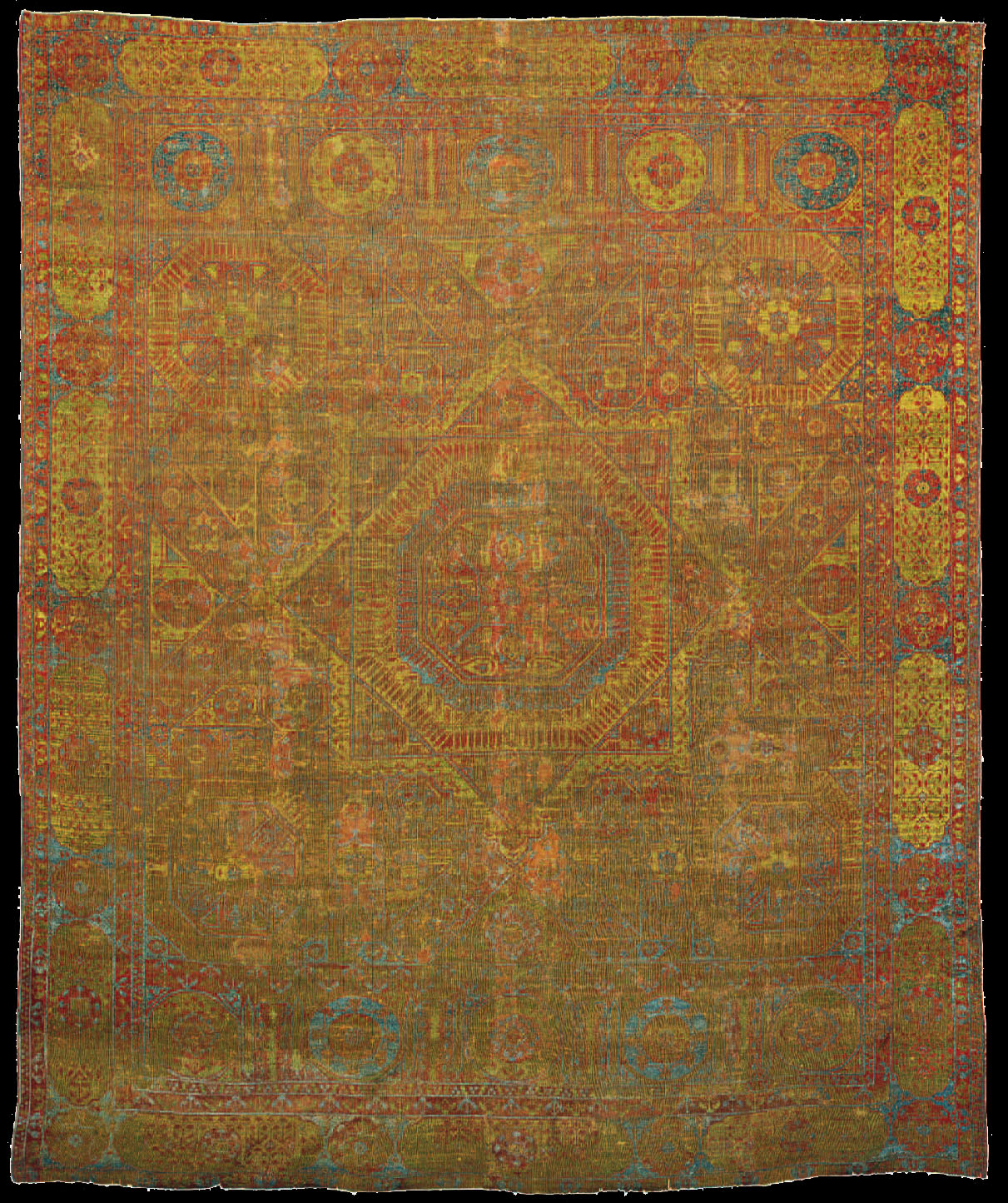|
The Arhan
Mamluk carpet. Cairo, Egypt, 16th century, Ottoman Empire. 2.51 x 3.08m
(8'3" x 10'1"). The Museum of Islamic Art, Doha, Qatar. no. A22
The Arhan Mamluk carpet, reportedly with the
same Turkish family for over seventy years, was acquired by the MIAQ in
1997. Probably made in the second quarter of the 16th century, it has just
three colours, red, green and blue. The red (lac) has corroded, while the
blue (indigo) and green pile is quite high in places, giving a sculpted
effect. The carpet had been folded for many years: along the fold lines
are some tiny holes, probably caused by moth and now skillfully restored.
The drawing is remarkably good, and the serrated edge of the eight-pointed
star medallion is also found on some second period carpets. An extra panel
at each end of the field contains large circular medallions alternating
with groups of three trees: a palm flanked by cypresses. A special
feature, in the inner and outer minor borders, is the three balls and wavy
lines of the Ottoman šintamani symbol.
|

